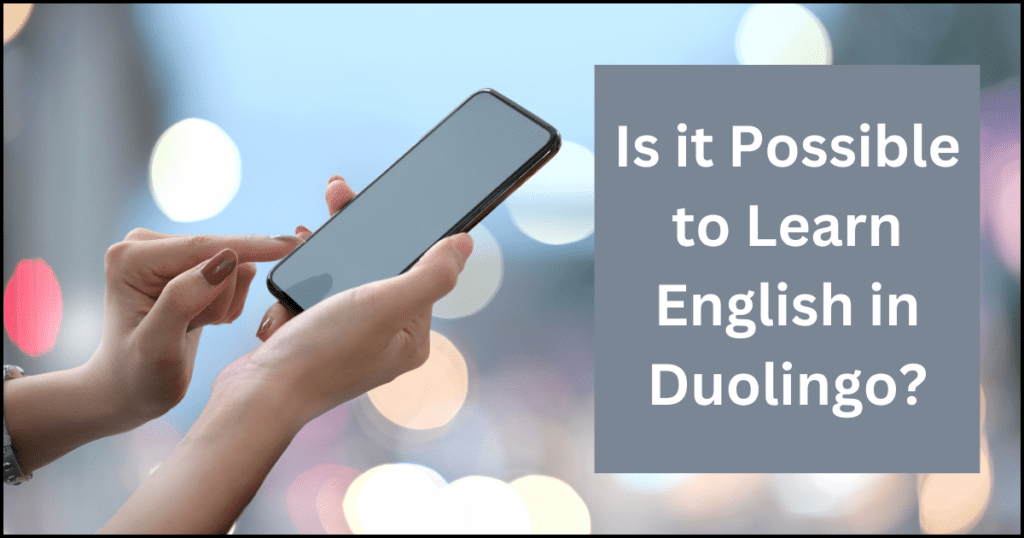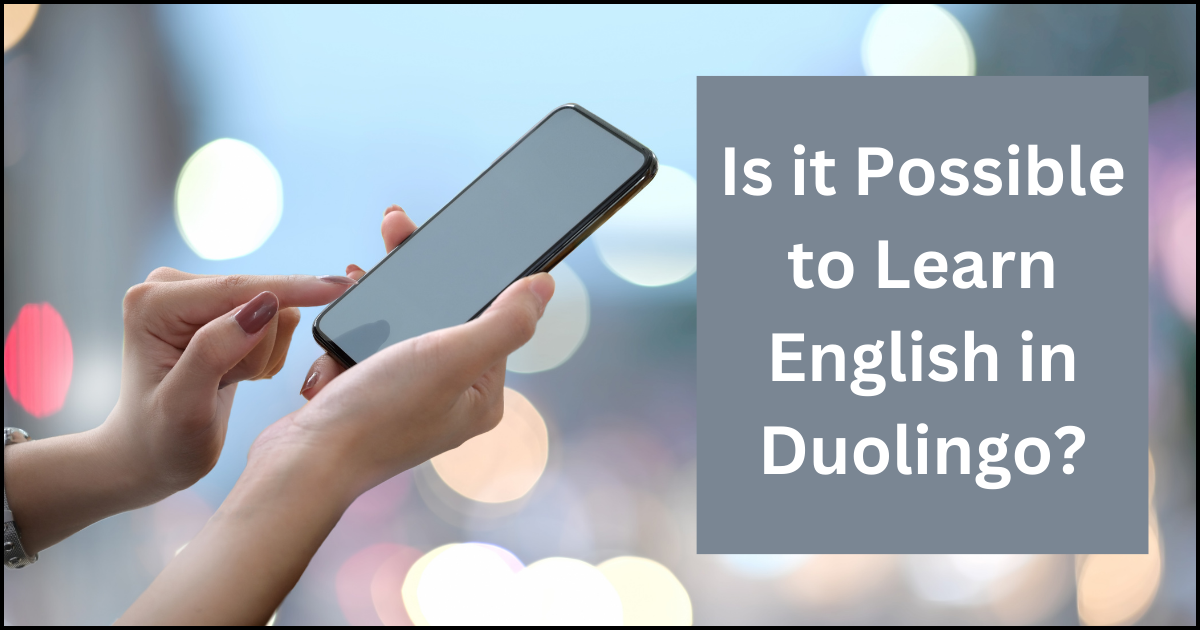Learning English has become a top priority for people all around the world. Many turn to Duolingo, a popular language app, in hopes of making the journey smoother and more enjoyable. But, is it possible to learn English in Duolingo effectively? Is it possible to actually achieve fluency with Duolingo? Let’s explore what this app can, and cannot do for language learners.

1. How Duolingo Teaches English
Duolingo uses a fun, game-like approach to teaching English. The app breaks lessons into short, engaging activities that help users build vocabulary, understand grammar, and form simple sentences. With a daily practice feature, users keep their “streak” and gain points, making learning feel like a game.
Duolingo English learning review often highlights its simple, bite-sized lessons that fit easily into anyone’s schedule. The app encourages consistency, which is crucial for language learning. But is this enough for real progress?
2. Can Duolingo Really Make You Fluent in English?
This is the big question: Can Duolingo make you fluent in English? Here, we need to be realistic. Duolingo is fantastic for learning basic words, phrases, and simple sentence structures. But fluency requires a deeper grasp of English—especially in conversation and comprehension.
How effective is Duolingo for English learning overall? For many, it’s a strong starting point, especially for beginners. The app builds vocabulary and helps learners practice daily. However, conversational skills, cultural context, and advanced grammar are often missing. So while Duolingo can help beginners get started, achieving true fluency might require additional resources.
3. Comparing Duolingo with Traditional Methods of Learning English
How does Duolingo English vs traditional methods compare? Let’s look at some differences:
- In-Person Classes: In traditional classes, teachers give immediate feedback and help learners with pronunciation. There’s also a chance to ask questions and get customized help.
- Books and Textbooks: Books provide in-depth explanations of grammar and language rules. This is something Duolingo doesn’t focus on as much.
- Duolingo’s Pros and Cons: Duolingo is convenient and portable. You can practice anytime, anywhere. However, it lacks the interaction and in-depth lessons that traditional methods offer.
In short, Duolingo is great for getting started, but other methods may be needed for deeper learning.
4. Tips for Making the Most Out of Duolingo
If you’re serious about learning English with Duolingo, here are some tips that can help maximize your progress:
- Practice Daily: Consistency is key. Even 10 minutes a day can make a big difference.
- Supplement Your Learning: Use other resources like English podcasts, books, or YouTube channels for better results.
- Engage with Others: Try practicing with friends or joining English-speaking groups. Real-life practice goes a long way.
These Duolingo tips for beginners will help you get more out of the app. Remember, Duolingo can be your starting point, but combining it with other tools can accelerate your learning.
5. Free or Paid? Understanding Duolingo’s Versions
Another common question is whether to use Duolingo’s free version or upgrade to Duolingo Plus. The free version includes ads and has limited “lives” (which you lose after mistakes), but it offers all basic lessons. Duolingo Plus removes ads and lets you practice without losing lives.
For beginners, learning English free with Duolingo works well. The free features are enough to get you started, though serious learners might find the upgrade useful for an uninterrupted experience.
6. Real User Experiences: What Others Say About Learning English with Duolingo
Many users have shared their experiences in forums, videos, and Duolingo English learning review pages. The consensus? Duolingo helps build a foundation but may not be enough to achieve full fluency.
For example, many users say they feel confident with basic phrases but struggle with conversations. Others report that while they understand written English, speaking and listening comprehension remain challenging. This shows that while Duolingo is helpful, it may not cover all aspects of language learning.
7. Final Thoughts: Is Duolingo Enough for Learning English?
So, is it possible to learn English in Duolingo alone? The answer depends on your goals. If you’re looking to understand simple sentences, expand vocabulary, and have fun with language learning, Duolingo is fantastic. However, for those aiming for full fluency, additional practice and other resources are essential.
Learning a language is a journey, and Duolingo can be a helpful step on that path. It’s a great tool for beginners, and for many, it sparks a love for language learning that leads to bigger achievements. So, if you’re just starting, give it a try, but remember—it’s just one part of the journey!
Conclusion: Is it Possible to Learn English in Duolingo?
In conclusion, Duolingo is a valuable tool, especially for beginners. With its easy access and engaging design, it’s worth a try. However, to become truly fluent, you may need more than an app. But hey, it’s a wonderful start—and every journey begins with a single step.
Read Also:

